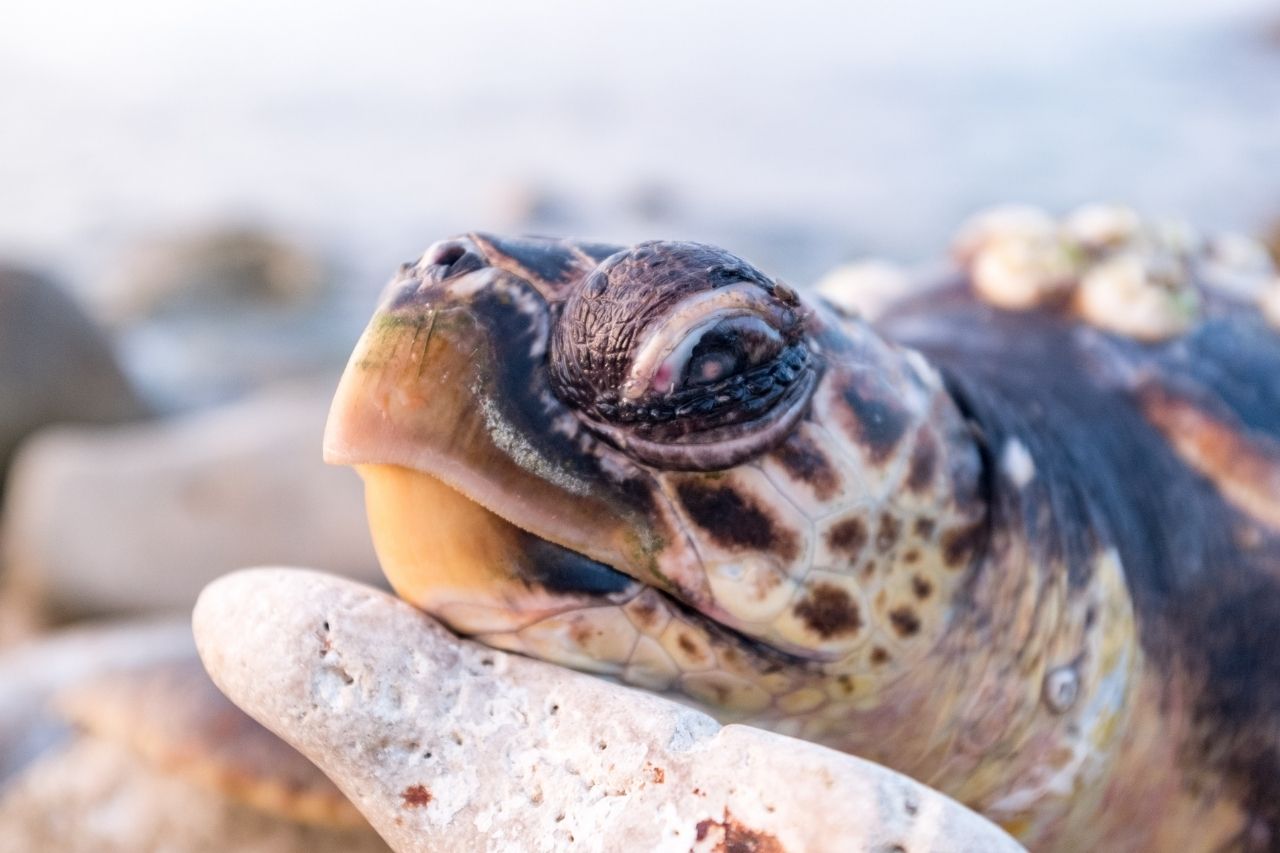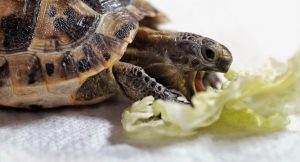Turtles can be beautiful and fun pets, which require specific care requirements that we turtle owners should be aware of. One of their most significant need is health care, and at this level, it is crucial knowing the signs of a dying turtle to comfort and help them live through the remaining days.
Turtles have got a tough shell, and you might think they can protect themselves without their owner’s help. You will be shocked to know that turtles are more vulnerable than we think. Below are some things that can make your turtle die and how to go about it to save this adorable pet.
How to Tell If my Turtle is Dying
I can tell if my turtle is dying by identifying some health conditions such as diet deficiencies, swimming problems, discharge and bubbling, parasites, and breathing problems. Surprisingly my turtle can conceal its symptoms just like other small pets and reptiles do, and by the time I discover, it’s probably close to death. To recognize any problem as soon as possible, I am always cautious about the day-to-day routine, turtle’s diet, and habits since it is a significant part of turtle ownership.
Breathing Problems
Does your turtle suffer from breathing problems? As respiratory issues, which are very common with turtles, can be mild or severe, mainly caused by Pneumonia. Some of the respiratory symptoms that a turtle is likely to suffer from include grasping, sneezing, and wheezing. Turtles also suffer from involuntarily opening their mouth wide and often yawning (gape). It has also come to my attention that a turtle can struggle to get as much air as possible by constantly moving its necks.
Skin Problems
Swelling on any part of the body, especially the shell, eye, and ears, can also be observed. This is a clear indication that a turtle has got issues. Additionally, Red irritations, visible tumors, holes on the shell, open wounds, and lesions are also indications of skin infection. In case you manifest any of these issues, contact your veterinarian right away.
Low Appetite
A turtle can have gastrointestinal tract obstruction or internal infection, which manifests as a result of weight loss, low appetite, and refusing to hibernate. Low appetite in female turtles tends to be a big problem because some of their eggs cannot usually pass from their bodies. Consult your veterinarian right away.
Dehydration
Both Terrestrial and Aquatic encounter dehydration at a certain time in their lives. Terrestrial turtles battle dehydration over an extremely long period, while Aquatic turtles mainly experience this issue during transport or shipping. Hence it is of great importance that your turtle has the means to fresh and clean water. To avoid dehydration, make sure you spray fresh vegetables with water before your turtles can consume them.
Additionally, Environmental factors such as humidity and temperatures can also lead to dehydration of your turtle. To avoid these issues, make use of moisture-retaining substrates such as cypress.
I would also advise you to continuously soak your terrestrial turtle in about 1 or 2 inches of water for not less than an hour a week. Some of the signs that your turtle is dehydrated include:
- Wrinkled skin– Though the skin of a turtle is rough, but the muscles are usually smooth. Make sure you pinch its skin if it moves back slowly or does not move back into place. Probably it is dehydrated.
- Poor Body Weight– Your turtle should not feel light when lifted. Regularly watch its weight.
- Listlessness– This is a state of being lethargic. If your turtle does not move to hunt for food or drink water, instantly soak it in water. If still no response, contact your veterinarian right away.
- Poor Muscle Tone-This should be done by gently pulling your turtle’s leg, and if it does not act quickly, this indicates your turtle is dehydrated.
Stool Observation
I would advise you to be very watchful of your turtle because it may be having digestive tract destruction, parasitic infestations, or damage to the organs without your knowledge. Some of the symptoms that indicate something is amiss with a turtle’s feces include diarrhea, constipation, and blood in the stool. Therefore your turtle requires critical medical care, whereby surgery here would be the best option to remove the obstruction to keep your turtle from dying.
Swimming Problems
Turtles are swimmers naturally. But sometimes they get to struggle while swimming and again I can advise you to be very watchful on your turtle. You can easily observe swimming problems in your turtle, for instance, difficulty in floating, tilting, or disorientation. All these are warnings as they indicate serious illness.
Lethargy
A healthy turtle should be very active, and in case of any inactivity, this is a cause for alarm. An active and healthy turtle should always move around the tank in response to its usual cage habitat, food, and interaction with its owner. A lethargy inclination and swimming problems cause alarm, and you should contact your veterinarian without any delay.
Discharge and Bubbling
Unhealthy turtles tend to remove discharge through their mouth, nose, ears, and even their eyes. Mouth discharge results from a “bubbling” illness brought on by the respiratory disorder. The discharge from their nose, eyes, and ears, particularly the discharge from the ears and eyes, maybe thick, pus-like, accompanied by swollen ears and eyelids. This is due to insufficient Vitamin A.
Dying or Brumation?
Brumation is a state of ‘deep sleep’ where turtles undergo the same inactivity and low body temperature, respiratory rate, heart rate, maybe and metabolic rate drops. This can go for some months during winter. You should consult your veterinarian to know when your turtle can Brumate and the particular requirements during these months.
How To Comfort A Dying Turtle?
Equipped with all the symptoms of a dying turtle, you can tell if your turtle is in its last stages. Therefore now the most important thing to do is to pay as much attention as possible.
Please provide water, proper heat and lighting, and obviously food to your pet turtle. You can also contact your turtle, touching its shell, legs, neck as you keep them company.
Cognizing turtle issues without delay can be the difference between life and death, as turtles conceal symptoms, and by the time you notice, it can probably be close to death. On the other hand, sunlight is of great importance because it enables turtles to produce a particular vitamin that keeps them healthy. A lamp can also serve the same purpose. Because when your turtle fails to produce that Vitamin, it is likely to die. Make sure your veterinarian is highly skilled about the turtles that you can consult from and save the life of your turtle.
Conclusion
If you are looking forward to owning this fantastic and fun pet, you need to be aware of all the above facts on comforting a dying turtle. Like I said previously, be very cautious because turtles hide their symptoms and quickly die if quick actions are not taken.
When your turtle is dying, it is best to keep your pet comfortable and as much time together as possible.
Ensure you have a specialized veterinarian to consult and prevent your turtle’s illness and save him from dying. Always remain vigilant and watchful of your turtle day to day routine, habits, and diet.




![Read more about the article Best Automatic Turtle Feeder? [Only Proven Solution]](https://turtlepets.com/wp-content/uploads/2019/11/Best-Automatic-Turtle-Feeder-e1574025806388-300x162.jpg)